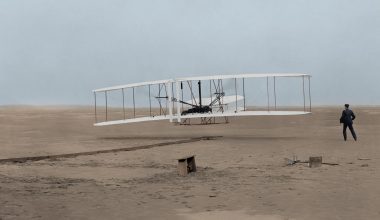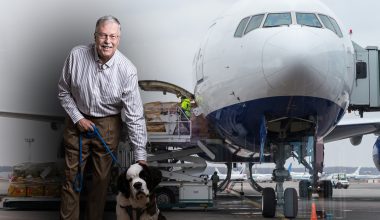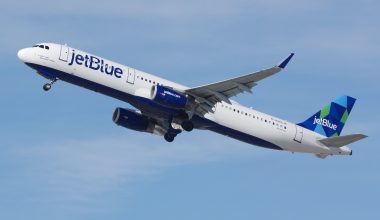A pilot or flying job is one of the most thrilling and rewarding professions in the world that comes up with its own set of privileges that are the envy of the marketplace. It is a sought-after career for those who have a zeal for flying airplanes and are willing to exercise their flying passion at work. It’s a soothing experience to catch a glimpse of an aircraft soaring overhead. What’s even more exciting is flying the aircraft at a staggering height of over 3000 feet yourself. How cool is it to feel the magic of flight every day and have the cockpit as the office? Another enticing feature of being a pilot is an attractive, above-average salary to lead a luxurious lifestyle. So, how much do pilots earn?

Embarking on a flying career as a pilot allows you to reap the benefits of extremely generous pay, ranging up to a six-figure median annual income or even more. Piloting is a highly skilled job that requires you to synthesize and comprehend extensive technical information and master flight control skills. Furthermore, a pilot has the responsibility for the safety of human lives and property on board as a leader of the aircraft. Choosing a career as a pilot is a huge investment that requires significant financial and time commitment to propel your flying ambitions to a new height. Although it sounds daunting, what follows as a result of intensive training and fulfillment of required aeronautical flight experience is a handsome paycheck that is more than sufficient and prestige.
How much do pilots earn?
In answer to the query, ‘how much do pilots earn?’ it is important to remember that pilots do not get a flat annual salary like other professions but are paid per flight hour. While it seems all pilots do the same task of flying the aircraft, they would be paid equally. But the pay rate is different as there are several types of pilots varying according to the type of licenses they hold. They are private pilots, commercial pilots, airline pilots, certified flight instructors, etc.
In the US, commercial pilots make the median annual wage of more than $95000 per year, whereas airline pilots and copilots receive a paycheck of over $190000 on average annually. The private pilot in America may earn as low as $22000 per year and as high as $210000.
A certified flight instructor (CFI) can earn from a minimum of $10 to upwards of $50 per hour, depending on the experience, demand, and work location. A CFI can’t work more than eight hours in 24 hours as specified by the rule, so he/she can expect to make between $400 and $1000 weekly. So, the annual earnings of CFIs range from $30000 to $50000 in the US.
How much do pilots earn at the starting point?
Most pilots commence their paid flying career as certified flight instructors whose modest income ranges around $30-$40 per hour, depending on the flight school. As they build in flight hours, sharpen their skills and upgrade their pilot license, they will step up to work in regional airlines and later in legacy carriers. Although the starting pay for pilots is low, they will earn more than sufficient as they record more flying hours and stay longer with the airlines. At the starting point, regional pilots get an hourly rate of $20-$50.

Variation in pilots’ incomes; how much do pilots earn
It is difficult to determine the accurate figure as the paycheck of pilots varies depending on the airline, experience level, aircraft flew, and rank of the pilot. Let’s see how much pilots earn according to the carrier they work for, their experience and ranking, and the type of aircraft they fly.
Earning of pilots varies according to:
1. The airline they work for
Not every pilot qualifies for an airline job because Airline Transport Pilot License (ATPL) is a must to land an airline pilot career which requires him/her to accumulate at least 1500 flight hours. Meanwhile, No airline is the same, so the pilot salary varies among airlines. Basically, there are two categories of airlines-regional and major, and the income earned by pilots in regional and major air companies are as follows:
In regional airlines like Air Wisconsin, Mesa Airlines, Horizon Air, PSA Airlines, and Republic Airways, a captain earns an income of $71000, $66000, $70000, $82000, and $90000, respectively, in the initial year. In the 12th year (1000 hours in any 12-calendar-month period), a regional captain will earn a six-digit annual income, i.e., over $100000.
The first officers in the same regional airlines earn $37000, $36000, $40000, $50000, and $46000, respectively, in the first year. Their income will rise higher as time passes by; however, it won’t cross 6-digit figures. Regional carriers pay less because pilots operate small regional jets that can accommodate less number of passengers as compared to jumbo jets. Many work as regional pilots to clock in enough flight hours required to get a job in major carriers.
Meanwhile, the financial rewards of pilots’ paychecks are a lot higher in major airlines. Among major full-service carriers, Delta Air Lines offers the most generous pay to its first officers and captains flying 1000 hours per year. The salary of Delta First Officer is $92000, and Delta Captain is $325000 in the starting year. Likewise, United Airlines also provides handsome wages to its pilots-$323000 for the captain and $91000 for the first officer in the 1st year. The captains of American Airlines and Hawaiin Airlines can also expect to earn over $300000 every year.
2. Experience and ranking
Airlines follow a seniority-based system and decide the pilots’ salaries based on their place on the seniority list. If you are a pilot who has been employed for the longest time, you will have the highest seniority and earn the maximum pay. On the contrary, if you are just hired, adjust to the low pay until you move way up on the seniority list, which will ultimately lead to significant pay raises.
The more aeronautical flight experience you have logged in, your annual income will be higher. The years of experience make a core part of income for commercial and airline pilots. The ranking of the pilot also governs the pay rate. As we see above, a newly qualified first officer doesn’t have as much of a big starting salary as an airline captain. A new first officer at regional airlines typically gets around $40 to $50 per hour, while a captain makes an hourly income of $70 to $100. Legacy carriers start out at an hourly $65-$70 for first officers and over $190 per hour for captains in the first year.
Also Read: How to become pilot from Nepal
3. Type of aircraft they fly
Aircraft vary according to the manufacturer, size, seat configuration, type of engine, the purpose they serve, etc. The operator of regional jets earns less than commercial mainline jetliners. On average, the pilot flying jumbo jets earns more than $200000 every year. But flying large non-jet aircraft culminates in less than $100000 median salary annually. The small jet operator makes an annual income of around $100000, whereas the median annual salary for the small non-jet operator is nearly $85000.
Any benefits apart from wages
Now we have learned about the earning potential of a pilot based on flight hours, experience, aircraft flown, and the airline served. Aside from high pay, being a pilot comes with lots of privileges such as a training completion bonus, signing bonus, free travel, per diem, healthcare, and insurance benefits, etc. In addition to the hourly wage, airlines often pay a certain stipend to pilots while they get their training done. Pilots also receive per diem to cover their expenses while on trips.

With the expansion of flight routes and an increase in air passenger traffic, the demand for pilots is increasing. To avoid pilot shortage and attract prospective first officers and captains, regional airlines frequently provide signing bonuses which vary based on the pilot’s experience. Envoy Air, PSA Airlines, and Piedmont Airlines provide above $150k in bonus packages for eligible pilots, whereas Trans State offers a $44000 signing bonus.
On top of their hourly wages and bonuses, pilots get to enjoy free travel on flights, free trips to explore the world, and attractive healthcare and life insurance benefits.
Minimum daily/monthly guarantee
To ensure pilots are not overworked, Federal Aviation Administration requires that a pilot must rest at least 18 hours before hopping off for the next duty in case he/she has clocked in more than 8 hours during 24 consecutive hours. Similarly, a pilot must not cross 32 flight hours during any seven consecutive days and exceed 1000 flying hours per year. Most airlines follow the model of minimum daily/monthly guaranteed hours to pilots to ensure them a paycheck under all conditions.
Usually, the monthly guaranteed minimum hours offered by airlines is 75 hours which is calculated based on base monthly salary and additional pay calculated at a prescribed hourly rate above the least flying hours.






